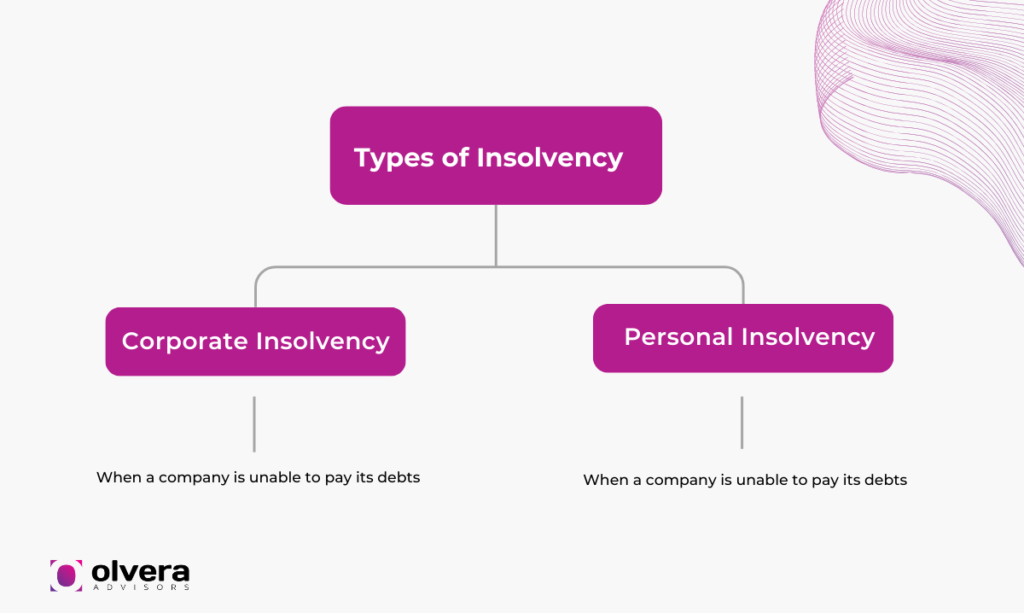Understanding business insolvency can be daunting, but it’s crucial knowledge for many company directors. As we undergo a period of uncertainty, directors must be aware if their business is headed for insolvency.
According to the ASIC, over 7,700 companies filed for insolvency from July 2023 to March 2024, a sharp increase of 36.2% within 9 months. Insolvency can be caused by many reasons that are often beyond the director’s control.
In this article, we’ll discuss some of the early warning signs of insolvency and how businesses can address the issue.
What is insolvency?
Insolvency occurs when an individual or an entity is unable to meet its financial obligations. This could be due to poor cash flow, increasing debts, low revenue, and economic challenges.
Typically, insolvency is divided into corporate insolvency and personal insolvency.

It’s important we differentiate insolvency from bankruptcy. While they are often used interchangeably, insolvency is simply a term used when a business or individual is unable to pay their debts.
Meanwhile, bankruptcy is the legal process initiated when a business or individual becomes insolvent. A restructuring practitioner takes active, legal steps to pay off company debts, sometimes through debt restructuring or even liquidation.
Company directors often misunderstand insolvency as a last resort to get out of debt. However, filing for insolvency can be used proactively to get a business back on track. Directors shouldn’t wait until the last minute to notice signs of insolvency, as detecting it early can help them address the issue.
Common early signs of insolvency
Cash flow issues
An unhealthy cash flow is a clear early indication that a business is insolvent. In this scenario, a business would have more money moving out of it than into it (i.e. if its revenue is unable to sustain its debts).
If a company cannot meet its financial obligations when they’re due, or is forecasted to not meet its financial obligations, then it’s likely to face insolvency.
Unable to pay bills and wages
Delaying staff wages is another indication of insolvency. Staff remuneration is a legal obligation, and businesses without sufficient liquid assets may find it difficult to pay staff their salaries or superannuation.
Additionally, companies that continuously put their bills on repayment plans, make partial payments, or push their bank overdraft limits are also likelier to face insolvency.
Decreasing sales
Consumer spending has hit a low in Australia, and many businesses are feeling the effects. If a business is facing a significant and repeated sales slowdown compared to previous trading years, it could be a warning sign.
Businesses should also take note of their cash flow if they have lost a big client or if their customers are consistently paying late.
Creditor demands
Creditors can apply to the court to declare a company insolvent if it owes an outstanding debt. This process then results in the company being legally presumed insolvent.
It’s important that directors pay off all creditor debts or negotiate a payment plan before any legal action is taken. Businesses that think they are unable to pay creditors are most likely facing insolvency.
Disorganised financial records
A company’s financial records and accounting information should be consistently updated, accurate, and reliable. This allows company directors to forecast their cash flow and make better financial decisions.
Disorganised financial records can include missing invoices and receipts, inaccurate balance sheets and income statements, and general discrepancies in financial documents. Company directors typically have a higher risk of insolvency when they struggle to manage their financial records and keep track of their revenue.
Loss of key employees or directors
High staff turnover is common when companies delay salary, or when employees suspect incoming layoffs. Businesses should take note if key personnel are leaving their company, as it could signal a deeper issue.
It’s also common for directors to pull out of a company if there’s a danger of insolvency, as they are typically more at risk. If the business has been charged for insolvent trading, directors will be personally liable for the company debt.
Unable to secure capital
Businesses with poor finances are often unable to raise funds to sustain their operations. This could be because banks have naturally risk-averse assessment criteria for lending, which is exacerbated if the company has a poor borrowing history.
Additionally, external investors may also refrain from lending money if they suspect a business is at risk. This puts the company in a financially difficult position, as it may not be able to secure the capital needed to recover its debts.
Directors Penalty Notice (DPN) received
ATO debt is one of the leading causes of business insolvencies, as companies are increasingly chased to repay their tax debt. These debts can be in relation to unpaid GST, PAYG withholding tax, and superannuation debt.
Recently, the ATO has increased its issuance of Director Penalty Notice (DPN) to company directors, which makes them personally liable for the debt. If a DPN is received, directors must either pay the required amount, hire a restructuring practitioner or administrator, or face being wound up. Many directors who are unable to pay the ATO will file for insolvency with a practitioner.
What to do if your business is at risk of insolvency
The number of insolvencies has grown with company directors becoming increasingly vulnerable. If your company has any of these signs of risk, it’s important to seek help immediately and find a solution. Getting early advice from a restructuring practitioner can help directors understand their scenario and possibly improve their chances of business recovery.
Olvera Advisors helps businesses stay ahead in a dynamic environment with bespoke restructuring solutions. Explore our blog for more insights on navigating the financial complexities of your industry.




